Case No. 1.
This 75 year old woman suffered from a recurring “abscess” on her foot for many years which turned out to be a diabetic foot ulcer.
She wrote: “Prior to your (wheatgrass) spray I was using Medi-Honey or calcium alginate, alternating. The appearance was pink skin with little exudate (“leakage of body fluid”). I have “Charcot Foot” with a bony protuberance that acts up every few years.”
“Charcot’s Foot” refers to distortion of the bones in the foot caused by damage to the nerves supplying this area. This nerve damage (neuropathy) is often due to diabetes, and can lead to distortion of the patient's foot, particularly the sole. Continued pressure of the skin overlying a bony prominence can erode the overlying skin, causing an ulcer which is almost invariably difficult to heal. In fact, many never do, because there are no wound-healing effective treatments available - except wheatgrass extract.
In this case, after two weeks' application of wheatgrass extract over the ulcer, the patient's sensation - that had been absent for several years, began to return. Soon afterwards, the wound healed.
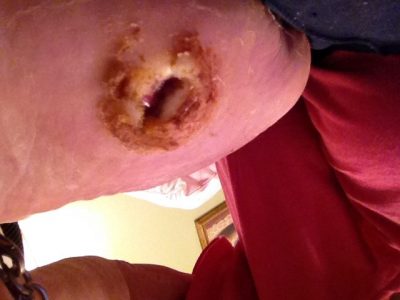
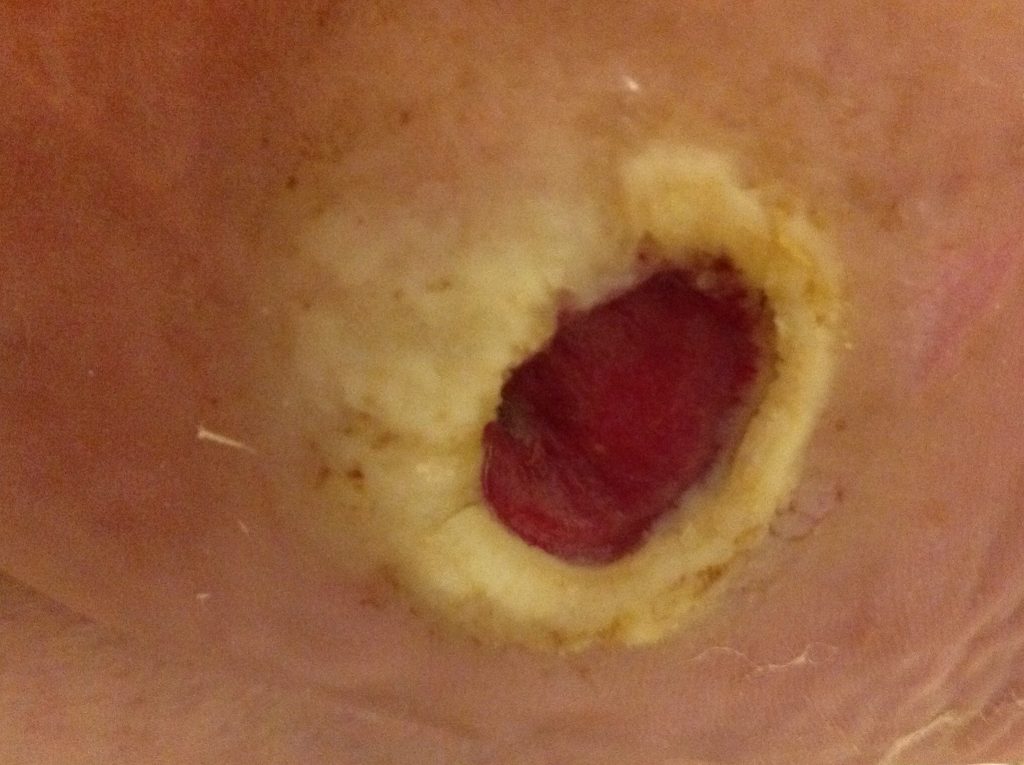
After six months wheatgrass treatment twice weekly, the ulcer is now pain-free but appears to have grown significantly. This is deceptive because the dead tissue around and inside the ulcer edge has been debrided or removed, thus revealing the actual size of the ulcer.
Also, note that the bottom of the ulcer shows that the blood supply, severely compromised by the patient’s diabetic status, has returned, meaning there has been repair of the microcirculation, the tiny blood vessels that are essential for supplying the wound with oxygen and nutrients. Ultimately, the ulcer has healed.
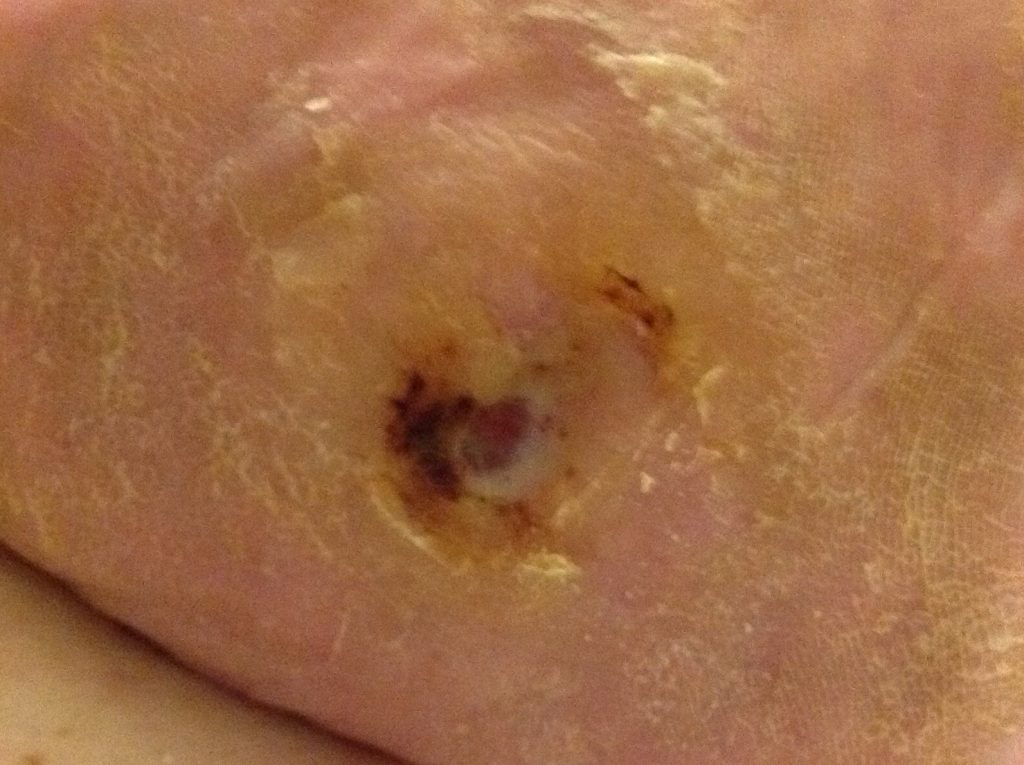
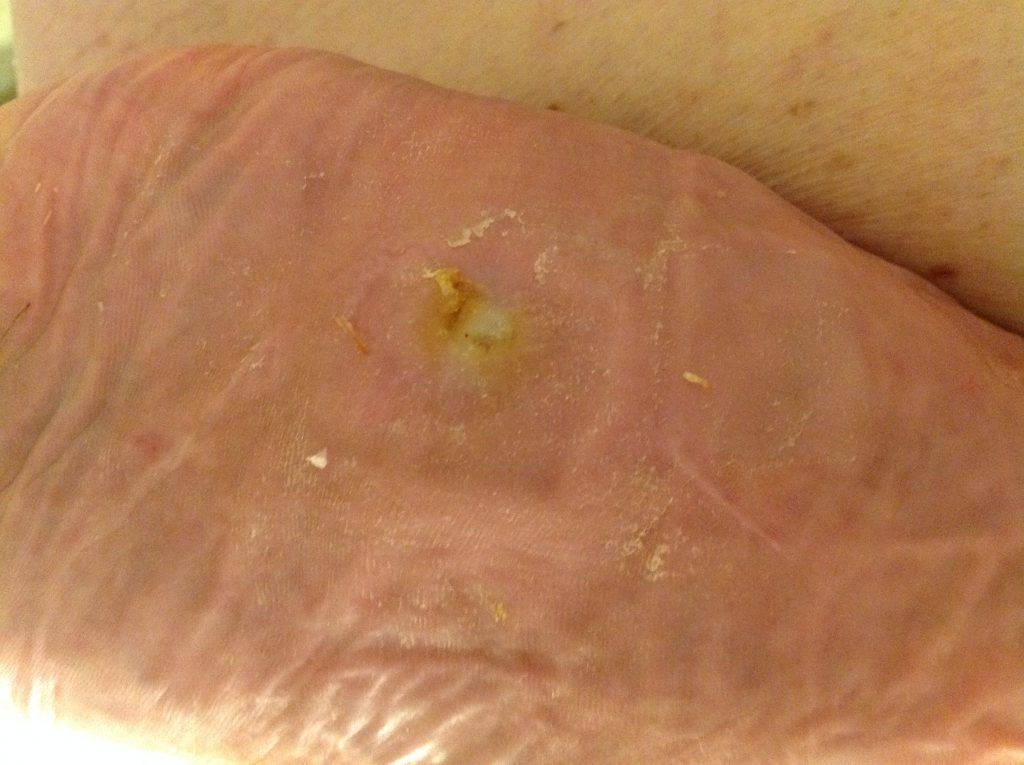
Case No. 2.
This case of healing of diabetic foot ulcer was sent to me by the patient. He writes:

This ulcer was a rare bullosis diabeticorum complication. Related to this condition, I developed a lower leg ulcer, underwent wound debridement surgery on June 15th which left an open wound approximately 5 cm x 8 cm, and spent 10 days in hospital on IV antibiotics.
From June 16th to August 16th the wound was treated with a negative pressure dressing / attached medical device (Renasys Go). In the 2 months of treatment with the negative pressure dressing / attached medical device the wound decreased in size to about 3 cm x 5 cm. In an effort to accelerate wound recovery, doctors recommended a followup skin graft operation. The skin graft operation was performed on August 16th and I spent 6 more days in hospital. About 90% of the skin graft ‘took’ but there remained some open areas and the graft / wound was slow to fully recover.
I commenced use of wheatgrass extract on September 11th, 26 days after the skin graft operation, applying the spray a couple of times a day and using a simple combine dressing for wound protection. Within a couple of days of commencing use of wheatgrass, the wound had revascularised and the open areas were beginning to close. The open areas of the graft / wound closed by September 18th, just 7 days after commencing use of wheatgrass extract, and the health of the graft / wound continued to make outstanding progress. (Fig. 2.)

In Figure 3. the wound is completely covered by new skin
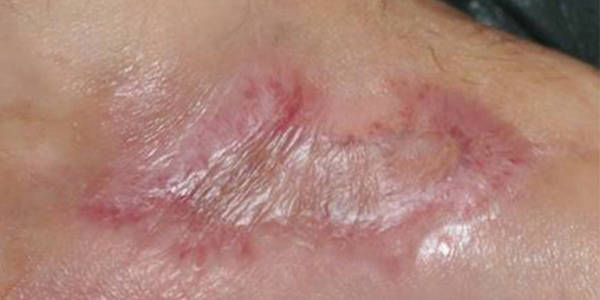
As a result, I was able to return to work on September 19th after over 3 months away due to this medical condition. I have found the use of wheatgrass extract to be complementary to the conventional wound debridement surgery, negative pressure dressing / medical device, and skin graft surgery. I am very happy with what I think were the accelerated graft / wound healing benefits resulting from my use of wheatgrass. I will continue to use wheatgrass daily, both to help thicken / toughen up this graft / wound area and on my shins, ankles, and feet to help prevent leg ulcers. Thank you.
H. South Coast, NSW, Australia
Comment & dosage
As the world's ageing continues to increase in number, so does the number of difficult to heal diabetic foot wounds. But, “modern” medicine with all its expensive wound dressings, oxygen chambers, antibiotics and various other gadgets has no way of reactivating the dysfunctional blood microcirculation that's causing the problem.
Wheatgrass extract however, is a highly effective, inexpensive alternative. It is important not to over treat any wound - diabetic, injurious, venous etc. A light spray of the extract over the wound once a week combined with daily cleansing, dressing and perseverence, is quite sufficient.